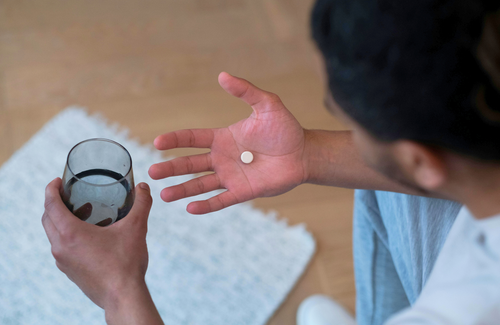
The largest study ever of the incidence of bacterial sexually transmitted infections (STIs) among gay and bisexual men who start HIV pre-exposure prophylaxis (PrEP) has found slight but statistically significant declines in chlamydia and gonorrhoea cases in the first couple of years after they started PrEP, but an increase – also slight but significant – in syphilis cases.
The study tracked STI diagnoses in 70% of Australian PrEP users, between 2016 and 2019. This period spans the introduction of large demonstration projects (EPIC-NSW in March 2016 and PrEPX in July 2016), and the start of Australia-wide public access in April 2018.
Michael Traeger and colleagues, from the Burnet Institute in Melbourne, Australia also found that a large majority of STI diagnoses was concentrated amongst a minority of PrEP users, suggesting that introducing prophylaxis for bacterial STIs among this group might be feasible.
Background
Since the introduction of PrEP, concerns have been raised that it might cause large rises in cases of other sexually transmitted infections (STIs) in users, due to less condom use. Some early studies found much higher rates of STIs in people who had started PrEP.
Most STI surveillance data suggests, however, that increases in STIs in the general population and larger increases in gay and bisexual men started happening well before PrEP was introduced. Some studies certainly confirmed high levels of STIs in PrEP users, but found evidence that these often preceded their starting PrEP – in other words staring PrEP was a response to a perceived risk, not the cause of it.
In the case of STIs that are often asymptomatic like chlamydia, more frequent and regular STI testing may also detect many cases that would otherwise have gone unnoticed – and untreated. The fact that a diagnosed STI is a treated one may even in theory lead to an eventual decline in STIs, if there are fewer people around with transmissible infections.
The evidence linking PrEP and STIs has sometimes been unclear because many studies have been relatively small, often taking place either in single clinics or in individual demonstration projects. And many settings with large rollouts of PrEP have lacked reliable anonymised surveillance that is able to track STI diagnoses in individual PrEP users.
A study of PrEPX, the demonstration project in the state of Victoria, found very high STI rates in PrEP users, but that they were concentrated in a minority, and were probably magnified by the increase in testing. A study of the New South Wales EPIC-NSW demo project found that STI rates in PrEP users increased in the year before they started PrEP, but showed little overall increase or decrease afterwards.
Use our test finder to find out where in the UK you can have a free HIV test that is convenient to you. HIV testing is free and confidential in the UK.
SearchThis study
Australia, one of the earliest countries to provide PrEP nationally and at scale, does have good STI surveillance. A scheme called ACCESS (Australian Collaboration for Coordinated Enhanced Sentinel Surveillance) set up in 2016, tracks HIV, STI and viral hepatitis diagnoses in attendees at 19 specialised sexual health clinics and 18 primary care clinics throughout the country.
The current study tracked ACCESS cohort members who were HIV-negative cisgender and transgender gay and bisexual men (not transgender women), who were aged 16 or over, who started PrEP between the start of 2016 and the end of 2019, and who received an STI test at least twice after starting PrEP. The incidence (infection rate) of chlamydia, gonorrhoea and syphilis was calculated per six-month period of the study.
A total of 22,730 men were included in the ACCESS database, which the authors believe represents 70% of people in Australia who are on PrEP. Eighty per cent of them were in the states of New South Wales or Victoria, which have the majority of the gay population.
Twenty-nine per cent of the cohort started PrEP in 2016, about 26% each in 2017 and 2018, and 19% in 2019. Their median age when they stared PrEP was 34 and 31.5% were aged under 30. The average time spent in the cohort was 1.27 person-years.
STI diagnoses
Among the cohort there were 11,351 diagnoses of chlamydia in 6630 people (30% of all those tested); 9391 diagnoses of gonorrhoea among 5885 people (27% of those tested); and 2062 diagnoses of syphilis among 1488 people (7.7% of those tested). There were 20,116 diagnoses of any STI, among 8223 people (44.5% of those tested: only those tested at least twice for all three STIs were included in the ‘any STI’ total).
"More than half of the participants did not acquire an STI during the study period, but most participants who did acquire an STI got more than one."
It can be seen immediately from these figures that more than half of the participants (55.5% of those tested) did not acquire an STI during the study period. But it can also be seen that most participants who did acquire an STI got more than one. Only 14% of participants had three or more STIs; but they accounted for the majority (63%) of diagnoses.
The number of STIs diagnosed was remarkably constant over the four years of the study. The average annual incidence (for each six-month interval) of any STI was 86% and only declined by 1% from the first six-month interval (January to June 2016) to the last (July to December 2019).
(Note that 86% incidence does not mean that 86 out of 100 participants got an STI. It means that in any one year, there were 86 diagnoses of individual STIs for every 100 participants, but that while many caught none, some caught several. Incidence in people under 35 was almost 100%; in people over that age it was 72%.)
However the average annual incidence of chlamydia and gonorrhoea, as separate infections, did decline over the study. The annual incidence of chlamydia in the study’s first six-month interval was 49%, and in the last six-month interval, it was 42%. With gonorrhoea, the annual incidence was 46% in the first six-month interval, and in the last interval, it was 37%. These declines, though amounting to only an approximately 1% fall in incidence every six months over the study, were statistically significant, i.e. unlikely to be due to chance.
In syphilis, the opposite pattern was seen: annual incidence (per six-month period) increased, from 6.2% per 100 person-years in the first six months to 9.8% in the last six months. This increase over the study period was also statistically significant.
With chlamydia and gonorrhoea, incidence rates of the individual infections were also higher in younger than older people; incidence averaged over the study period was 50% and 38% for chlamydia in under- and over-35s respectively, and 46% and 29.5% for gonorrhoea. With syphilis there was a slight but significant tendency for incidence to be higher in older than younger people (9.3% in under-35s and 9.5% in over-35s).
The declines in chlamydia and gonorrhoea incidence occurred within the first part of the study: in chlamydia within the first year and for gonorrhoea within the first two years. The increase in syphilis incidence was steady throughout the study until the last six-month period, when it declined somewhat.
Explanations and conclusions
The most obvious findings from this study are firstly that, in a large cohort subject to close surveillance and monitoring, “concerns about exponentially increasing rates of STIs transmission have not been borne out,” to quote the researchers. The increases and decreases seen were in single-percentage figures.
The subtle decreases in chlamydia and gonorrhoea, the researchers suggest, may be due to the fact that it was the highest-risk men who first started using PrEP, to be joined by lower-risk men later. If it was due to the effect of treating more asymptomatic infections, one would expect to see a sustained decline.
With syphilis, the increase seen may be due to a decline in serosorting. Syphilis, the least common of the three STIs, was very strongly concentrated among HIV-positive men in the 2000s, and a gradual decline in serosorting and an increased willingness of HIV-negative men on PrEP to risk condomless sex with HIV-positive men may have resulted in more spread into the HIV-negative population.
These explanations for fairly subtle effects, which are also put forward in an accompanying commentary by prevention experts Dr Chase Cannon and Professor Connie Celum, will need more research to be proven one way or another.
The second is that while the rate of STI infections overall was extremely high, it happened within a minority of PrEP users. The 14% of the study cohort who caught three or more STIs represent less than 2700 men.
For this group, the researchers comment, “There is growing interest in Australia in the use of doxycycline prophylaxis for the prevention of STIs”. Indeed a study published in 2019 found that 10% of PrEP users at a sexual health clinic in Melbourne reported using doxycycline as STI PrEP in the previous month, and a 2020 study found a similar proportion in the UK.
A French study in 2018 found that post-exposure STI prophylaxis (‘doxyPEP’) reduced chlamydia and syphilis infections by approximately 70%, but had little effect on gonorrhoea, possibly due to resistance. But a study is currently taking place in France, which combines doxycycline for chlamydia and syphilis with a meningitis B vaccine that has shown efficacy against gonorrhoea, as well as one in Australia that uses daily doxycycline PrEP.
A US study of doxycycline PrEP, in Seattle and San Francisco, was stopped recently owing to str0ng evidence of efficacy. Full results will be announced at the forthcoming AIDS 2022 conference in Montreal.
Traeger M et al. Real-world trends in incidence of bacterial sexually transmissible infections among gay and bisexual men using HIV pre-exposure prophylaxis (PrEP) in Australia following nationwide PrEP implementation: an analysis of sentinel surveillance data. Lancet Infectious Diseases, 25 May 2022. See https://doi.org/10.1016/S1473-3099(22)00175-X.
Cannon C and Celum C. Sexually transmissible infection incidence in men who have sex with men using HIV pre-exposure prophylaxis in Australia. Lancet Infectious Diseases, 25 May 2022. See https://doi.org/10.1016/S1473-3099(22)00284-5.


